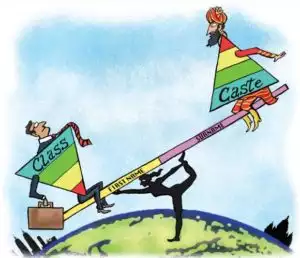I wrote this for The Times of India in July 2019, about how first names convey social status and even class capital amongst middle castes in India today. Link to the Times of India post.
***
A few years ago, in a Facebook post that is now offline, poet and activist Meena Kandasamy encouraged upper caste Indians to drop their surnames. These surnames, she said, had considerable caste capital loaded onto them, symbolising the holder’s privilege, and thereby reinforcing generations of inequality. Ms Kandasamy wasn’t off the mark. Many surnames, like Sharma, Iyer, Gupta etc, are strong markers of (upper) caste identity. She argued that if upper caste Indians truly cared about equality, they would drop their surnames.
No such thing happened at scale, except perhaps in states like Tamil Nadu and Kerala. Caste capital exists, and it isn’t going away soon. Yet, it is true that the impact and weight of caste isn’t uniform across India. If you are amongst the Dalit or even the wider Bahujan community, then as you move from rural India to urban India, and as you start getting wealthier and your comfort with English improves, you acquire what I will term as class capital, which to a certain degree neutralises the unequal caste capital.

It isn’t that your caste ceases to matter if you live in a metro, are fluent in English and have a well-paying job in an MNC. It may not ever come up at the workplace, but it does make its presence felt, when looking for a house, while dating etc. Still, acquiring class capital can buy you sufficient equality points to balance that playing field most of the time. To my mind, the creation of more and more spaces, concentrated in urban India, where class capital supplants caste capital is one of the important developments of the past 30 or so years in India.
If our surnames symbolise and store caste capital, then our first names are emerging as symbols of acquisition of class capital. For our elders, all of the social status unpacking was in the last name, which cued caste. This is, of course, harder in South India where surnames are not so common. Outside of the South though, surnames are a key that can be used to decode the person’s position in the caste hierarchy. But in our generation, especially in urban India, social status cueing is via our first names. In urban India, a Reyan Yadav or a Tia Bhatti cue higher social status than a Pradeep Sharma, all other things being equal.
Why is this so? These first names, Reyan, Tia and their umpteen counterparts Myrah, Kian, Anika, Neev etc are names that could fit into any culture or city globally. They symbolise the parents’ westernisation or globalisation, comfort with English, and some degree of affluence and success in the corporate sphere. But why these names specifically? Sohini Chattopadhyay, a journalist, referred to these as ‘First World Yoga Names’ in a penetrating essay a couple of years ago, a way of transcending community and regional identity to adopt a global rootless identity that could fit in anywhere in the world.
There is a smaller counter-trend too, of secure affluent upper caste Indians selecting somewhat Sanskritised names such as Aaryaman and Asavari. Or names such as Kabir, Armaan, Ruhi, neutral to both Hindus and Muslims. Kabir is particularly fascinating in its popularity with the Indo-Anglian intellectual class, the type which predominantly consumes English content, but makes an exception for Sacred Games and Coke Studio. I even know three South Indian couples who have named their sons Kabir, such is the popularity of this name amongst this set.
But back to First World Yoga Names: by being better able to predict affluence, globalisation and comfort with English, these first names have become surer predictors of likely social status in urban India than the traditional surname. Fluency in English is the key that can unlock income and open global pathways. It becomes the new gating principle supplanting the traditional marker of caste. This new marker needs a new way to be cued. And there comes the first name as a signal to convey a new privilege.
This then is another key development of the past decade or so — the stirrings of a transition from caste capital, invested in the last name, to class capital, cued by the first name. A key sub-trend of this transition from caste to class capital is the rising mobility of traditionally non-dominant castes, benefiting from access to education and English, and thereby jobs, leading to rising incomes. And as increasing numbers of these once-oppressed communities knock at the doors and break through, they are forcing a change in how we convey and signal privilege as well.
